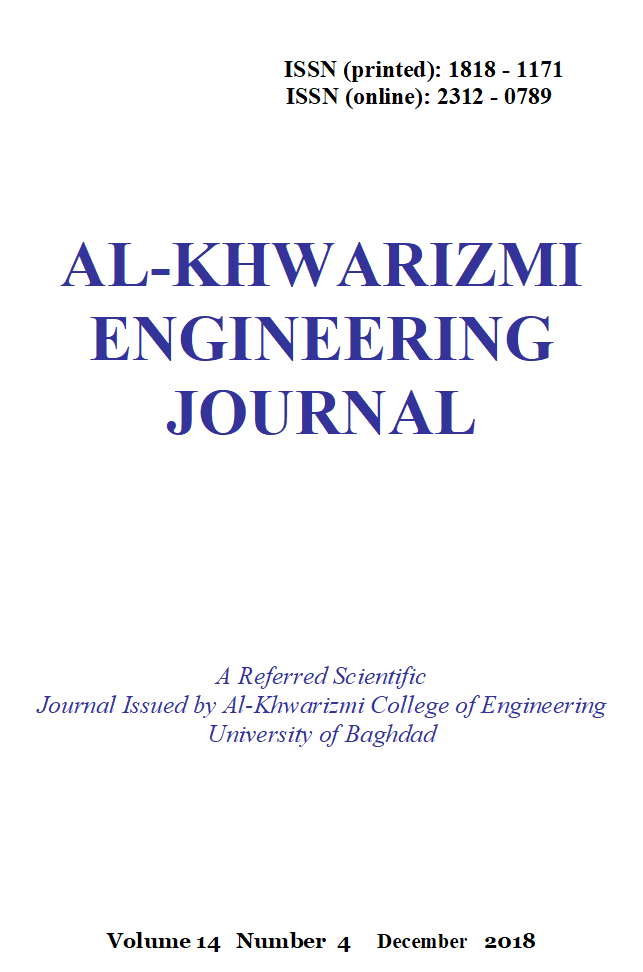Natural-Convection Phenomenon from a Finned Heated Vertical Tube: Experimental Analysis
DOI:
https://doi.org/10.22153/kej.2017.05.004Keywords:
Vertical tube, continuous, interrupted, finned, natural-convection.Abstract
In this work, an experimental analysis is made to predict the thermal performance of the natural-convection phenomenon from a heated vertical externally finned-tube to surrounding air through an open-ended enclosure. Two different configurations of longitudinal rectangular fin namely, continuous and interrupted are utilized with constant thickness, different numbers, and different heights are extended radially on the outer surface of a heated tube. The tube is heated electrically from inner surface with five varied power input magnitudes. The effect of fins configuration, fins number, fins height, and heat flux of the inner tube surface on the thermal performance of natural convection have been studied and analyzed experimentally. Obtained results show that the tube with twelve interrupted longitudinal fins gives the best natural-convection thermal performance in terms of average Nusselt number, about 20% greater than that for the tube with continuous fins. Experimental correlations to predict the average Nusselt number for the heated tubes with continuous and interrupted longitudinal fins are proposed. The present data are compared to previous study and good convergence is noticed.
Downloads
Downloads
Published
Issue
Section
License

This work is licensed under a Creative Commons Attribution 4.0 International License.
Copyright: Open Access authors retain the copyrights of their papers, and all open access articles are distributed under the terms of the Creative Commons Attribution License, which permits unrestricted use, distribution, and reproduction in any medium, provided that the original work is properly cited. The use of general descriptive names, trade names, trademarks, and so forth in this publication, even if not specifically identified, does not imply that these names are not protected by the relevant laws and regulations. While the advice and information in this journal are believed to be true and accurate on the date of its going to press, neither the authors, the editors, nor the publisher can accept any legal responsibility for any errors or omissions that may be made. The publisher makes no warranty, express or implied, with respect to the material contained herein.
















